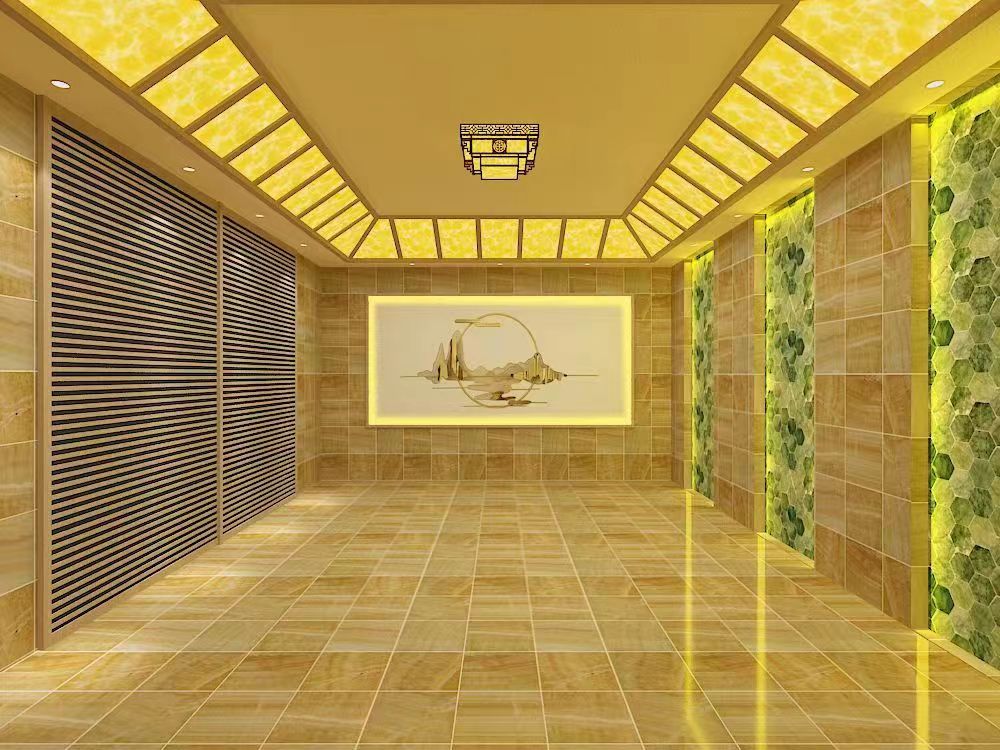
In the realm of sauna design, the pursuit of a perfect balance between functionality, comfort, and privacy is of utmost importance. One often wonders if it is possible to incorporate natural light and ventilation elements without compromising the much-needed privacy. The answer is a resounding yes, and this article will explore various strategies and design considerations to achieve just that.
Natural light has numerous benefits in any space, and the sauna is no exception. It not only creates a more inviting and relaxing atmosphere but also has a positive impact on our well-being. The soft, diffused light of the sun can make the sauna experience more enjoyable and less claustrophobic. It can enhance the visual appeal of the interior, making it feel more spacious and open. Additionally, natural light can have a psychological effect, promoting a sense of calm and tranquility, which is essential in a sauna setting.
Proper ventilation is crucial in a sauna to maintain air quality and regulate temperature and humidity. It helps to remove excess heat, moisture, and any unpleasant odors, ensuring a comfortable and healthy environment for users. Good ventilation also prevents the buildup of mold and mildew, which can damage the sauna and pose health risks. Moreover, a well-ventilated sauna allows for a more refreshing and enjoyable experience, as fresh air is continuously circulated.
Skylights and roof windows are excellent options for bringing in natural light without sacrificing privacy. They can be installed at an angle that is not directly visible from the outside, especially if the sauna is located in a secluded area or has a higher roofline. Frosted or opaque glass can be used to diffuse the light and further enhance privacy. Additionally, adjustable blinds or shades can be installed on the inside to control the amount of light and privacy as needed.
Light tubes are another innovative solution. They consist of a reflective tube that channels sunlight from the roof to the interior of the sauna. They can be installed in a way that is discreet and does not compromise the privacy of the space. Light tubes are relatively inexpensive and can provide a significant amount of natural light, even in areas where direct sunlight may not be accessible.
Indirect lighting techniques can also be employed to create the illusion of natural light. This can be achieved by using reflective surfaces or light shelves that bounce light into the sauna. LED strips or low-voltage lighting can be installed along the edges or behind panels to create a soft, ambient glow that mimics natural light. This type of lighting not only adds to the aesthetic appeal but also provides a sense of privacy as the light source is not directly visible from the outside.
Louvered vents are a popular choice for sauna ventilation. They can be installed on the walls or roof in a way that allows air to flow in and out while maintaining privacy. The angled slats of the louvers prevent direct views into the sauna, yet provide sufficient ventilation. They can be made of wood, metal, or plastic and can be painted or finished to match the sauna's exterior.
Wall or roof mounted vent fans can be used in conjunction with louvers or other ventilation openings. These fans can help to increase the airflow and improve ventilation efficiency. They can be equipped with grilles or covers that provide privacy while allowing air to pass through. Some vent fans also have adjustable speeds, allowing users to control the ventilation according to their preferences.
Installing air inlets and outlets with filters is another way to ensure proper ventilation while maintaining privacy. The filters can help to remove dust, pollen, and other impurities from the incoming air, improving air quality. The inlets and outlets can be designed in a way that is not easily visible from the outside, such as being recessed or located behind decorative panels.
To create the best sauna experience, it is important to consider the integration of natural light and ventilation. For example, skylights can be positioned above the seating area to provide both natural light and a sense of openness. Louvered vents can be installed near the floor or ceiling to ensure proper air circulation. The combination of these elements can create a more comfortable and inviting environment, where users can relax and enjoy the benefits of the sauna while feeling secure in their privacy.

